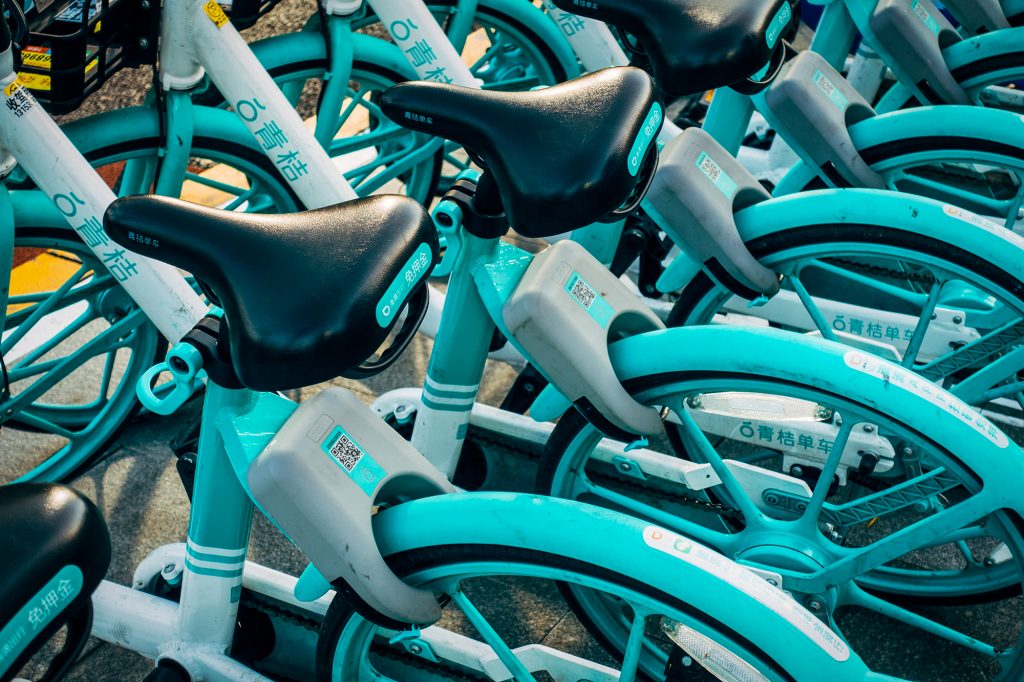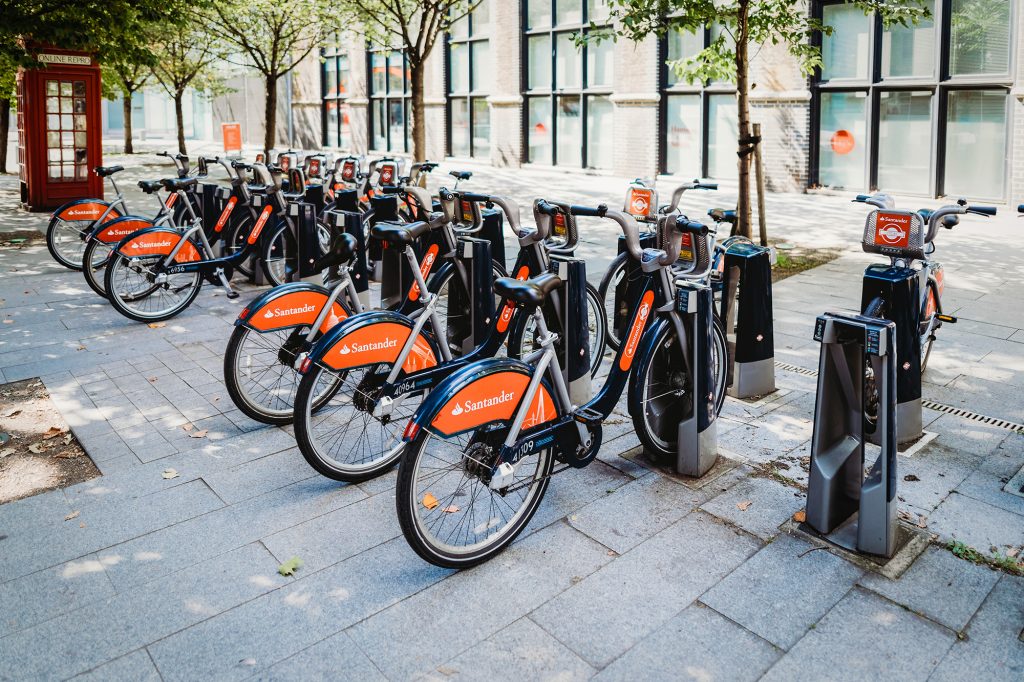“Many cities think bike sharing is this easy, ready-to-insert scheme: it’s not.” We spoke to two of Europe’s leading bike sharing experts to find out what five things you need to get right when setting up bike sharing schemes.
Bike Sharing: More Complicated Than You’d Think
“Bike sharing is a powerful tool to popularise cycling, but dangerous if done badly,” warns Mario Gualdi, author for the major EU bike sharing projects SpiCycles and VeloCitta.
After Barcelona and Paris spearheaded the bike sharing movement in 2007, it became standard for cities to set a scheme up. Whilst bike sharing increased the visibility of cycling, acting as a “battering ram” to break into urban mobility, Mario found that many underestimated the complexities.
Bike sharing schemes run a loss; bikes need daily redistribution; campaigning needs to target different users; tenders need to include oversight mechanisms – these were just some of the things overlooked by cities.
“For bike sharing schemes to be successful, you need to get these five elements right: organisation, software, hardware, business plan and marketing,” states Sander Buningh, project coordinator of VeloCitta. “If one element is not performing well, the whole system will fail.”
Using these five categories, we’ve created a blueprint below of the key things to look out for when setting up bike sharing schemes. By following this, your scheme should become a powerful tool – not a dangerously bad one.
Five Elements of Successful Bike Sharing Schemes
1) Organisation
Organisation refers to whether a public body, private party or partnership is responsible for the bike sharing scheme.
The city could contract the whole scheme out, share the tasks or have complete control; the four main models of organisation can be seen here. Whilst each city can decide how to organise the scheme, in Sander’s opinion “a public-private partnership works best because both parties have stakes in it.”
Once decided, it is vital that the tender is carefully thought through. “The success of a bike sharing scheme comes down to how well it is planned and how able you are to monitor what’s being done,” states Mario.
As outlined in the SpiCycles recomendations, this requires tenders to have clear goals, with direct oversight by the city, maintenance and redistribution requirements and penalties for non-compliance. Cities are advised not to tender bike sharing in combination with other services and should ensure access to the operator data to understand how the scheme is being used.
“All these things are perceived as very technical so many politicians totally disregard them,” says Mario, “but if you don’t do this, you’ll find a mess in the city and service that doesn’t work.”
2) Hardware
This refers to the physical components of the scheme, such as the bikes and docking stations. When choosing which bikes to purchase, a city should aim for bikes with robust, customised parts and uniformed branding to reduce the incidents of theft and vandalism. A useful guide to the different types of hardware can be found on in the OBIS handbook under ‘Physical Design’.
Whilst the majority of cities feature bike sharing schemes with docking stations, cities also have the option of implementing dockless ‘free floating’ schemes. Caution, however, should be paid to China’s difficulties with free floating schemes, as Mario warns that cities can become “victims of the assault of free floating systems.” To avoid this, he argues cities considering dockless schemes “must have a clarity of vision and be in constant dialogue with the operators.” Using a geo-fence zone plan can be an effective solution.

Cities need to determine the right size scale of the bike sharing scheme, identify the most popular destinations for stations and obtain permits for parking the bikes on, which may require coordination across decentralised boroughs. Whilst there is no set model, median cities ( >500,000 inhabitants) have an average of 14 bikes per 10,000 inhabitants. For more guidance, look here.
3) Software
The IT system which allows people to register, pay and contact customer assistance comprises the software behind bike sharing schemes.
As outlined in the VeloCitta Golden Rules, the registration system should be simple and possible on-the-spot. Online subscription only is often a barrier to users, while in-person subscription stores are useful for non-technical customers.
Card or app technology is most common, as it allows people to use pre-existing credit or student cards. Integrating bike sharing schemes within the city’s public transport tickets will also increases its usability. The Dutch OV-Fiets illustrates this, as the bike sharing scheme is operated by the Netherlands Railways as a last mile travel option.
Cities also need to decide how to charge customers. Often schemes allow for a free first half an hour as an enticement: Brussel’s failure to provide a free rental period has been cited as a reason for its disappointing bike sharing scheme.
4) Business plan
“You’re not going to make money,” says Mario, “you’re going to lose it, badly.” Since bike sharing runs a loss, he advises that cities see it as a form of public transport good which they are willing to subsidise. Through this mindset, administrators can then take action to minimise the losses.
User fees and subscription fees are one form of income, but they are often minimal. Having a sponsor can bring in additional funds, as seen in London’s Santander Cycles, or cities can charge for advertising. Deals can be struck up with cafes or bars that have stations nearby, and customised packages can be made businesses and universities that may want their employees or students to use the service. By securing a variety of funding sources, this will increase the scheme’s financial sustainability.

“The cost of redistribution is often not taken into account upfront,” says Sander. Returning the bikes to different stations each night requires income and can undermine the green image of bike sharing, as trucks may be used to transport the bikes. To combat this, Sander recommends having more than one target user group (so that journeys are at different times and routes) and points to Paris where users can gain extra minutes on their account for cycling to more remote stations.
Lastly, maintenance costs can be up to seven times more than the initial investment. Sanders suggests tasking local bike shops or technical schools with the repair of the bikes, as seen in Burgos, in order to incorporate the community directly.
5) Marketing
“This is the most neglected part,” says Sander. “Cities tend to think that bike sharing is only technical or traffic related – but you really need people from marketing and communication.”
Without a strong campaign, bike sharing will not receive the publicity and therefore uptake needed to make it worthwhile. Strong examples include Barcelona’s bike week and school events, Berlin’s map of bike routes, London’s free hot dogs for its first users and bike stunt opening show.
“There needs to be consideration of the target group and the science of communication,” urges Mario. Tourists, residents, employees, students and commuters should all be targeted differently: the VeloCitta target group factsheet outlines which messages and mediums should be used for each.
Having a catchy name and slogan can also assist in promoting the scheme, such as New York’s Citi Bikes ‘unlock a bike, unlock New York’ tagline. Gaining the support of prominent politicians, as seen through Boris Johnson’s support of the London scheme – dubbed ‘Boris Bikes’ – can help to raise the profile.
Ultimately, a city’s ability to conduct professional campaigns depends on its budget. But Mario encourages cities to “put the money and commitment there. It’s an enduring effort – you won’t see the results immediately, but it pays off.”
In a Nutshell…
As Mario states, bike sharing is not an “ready-to-insert” scheme but rather a complex creation. Cities need to pay attention to the detail and juggle all five areas competently – this is what makes or breaks bike sharing schemes.


